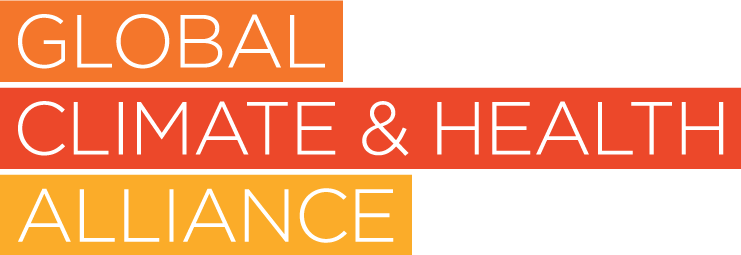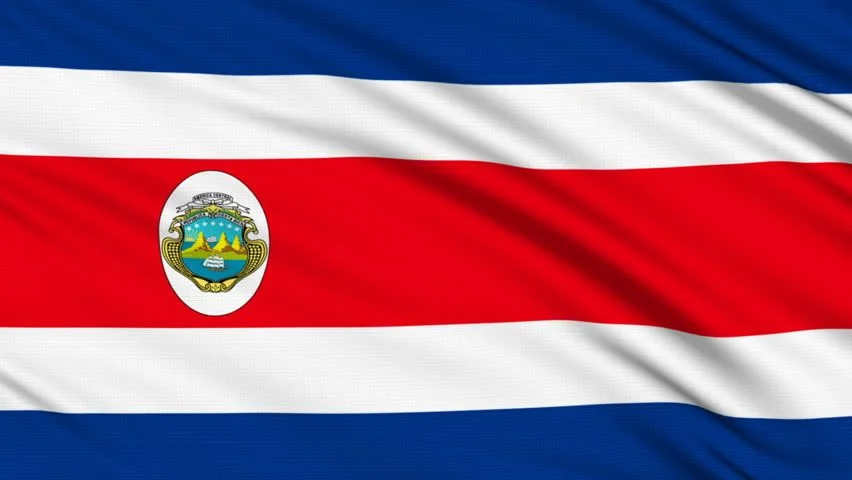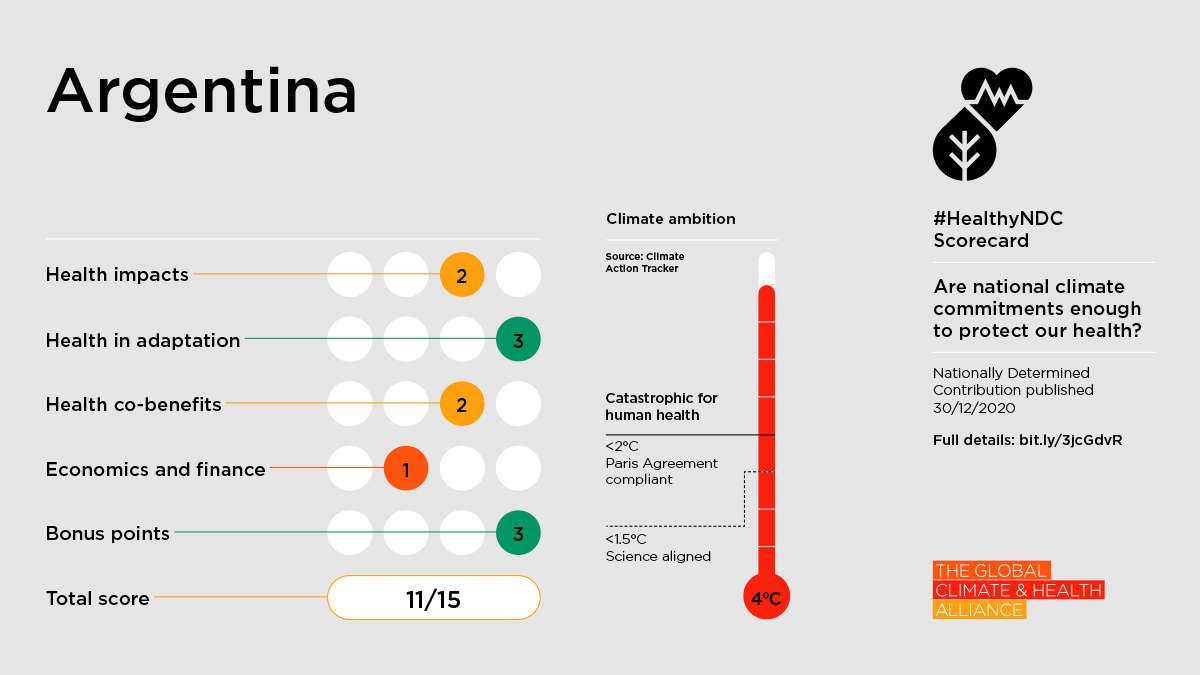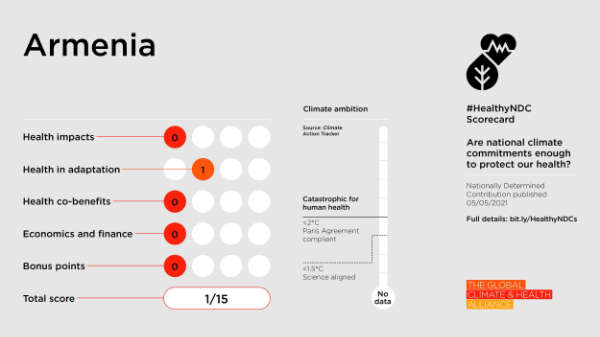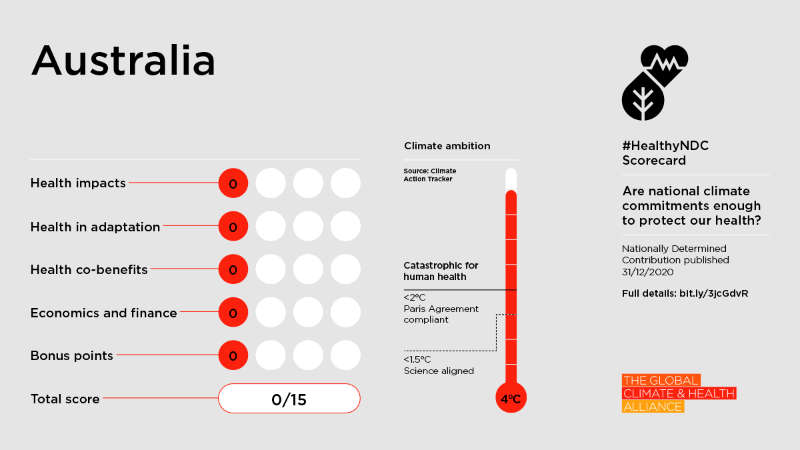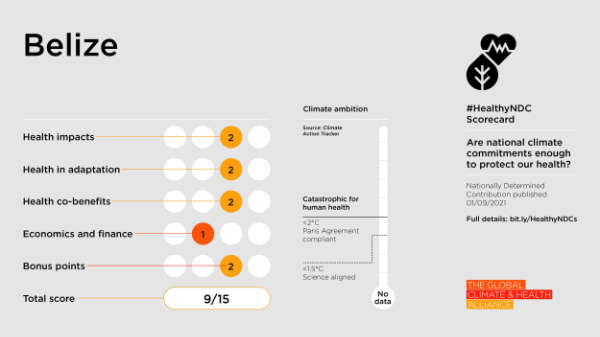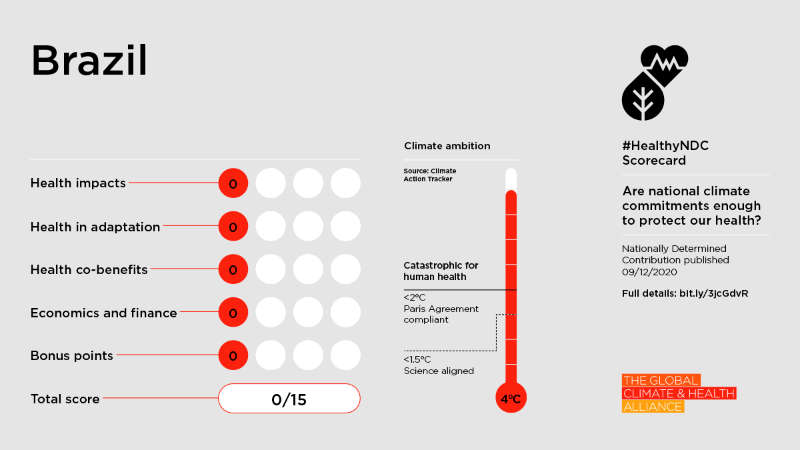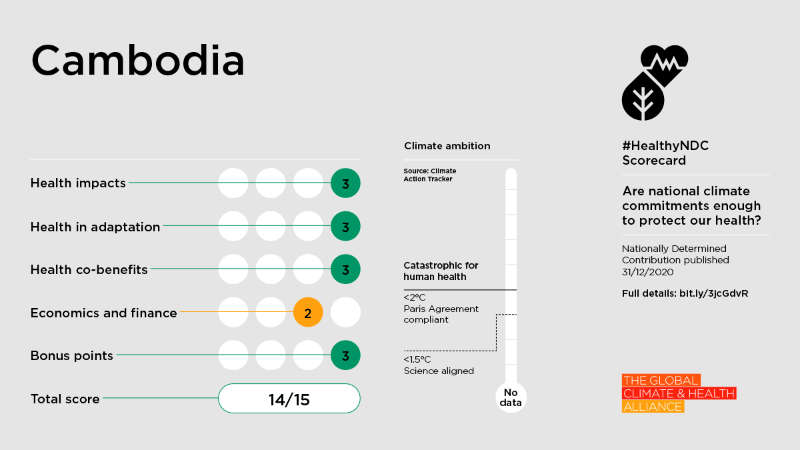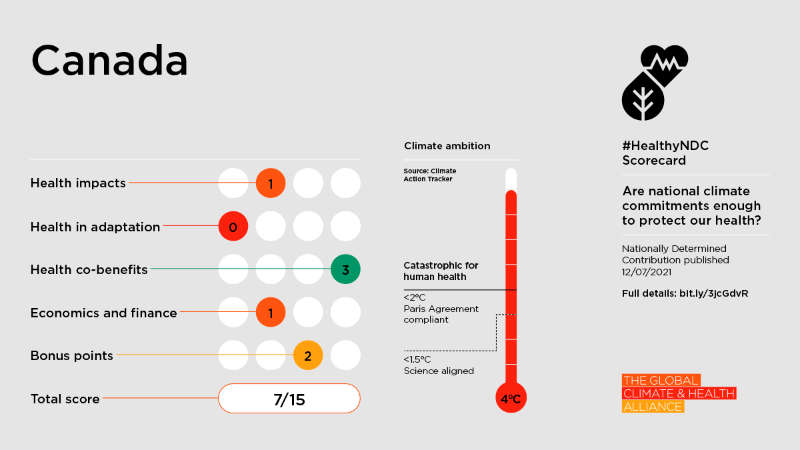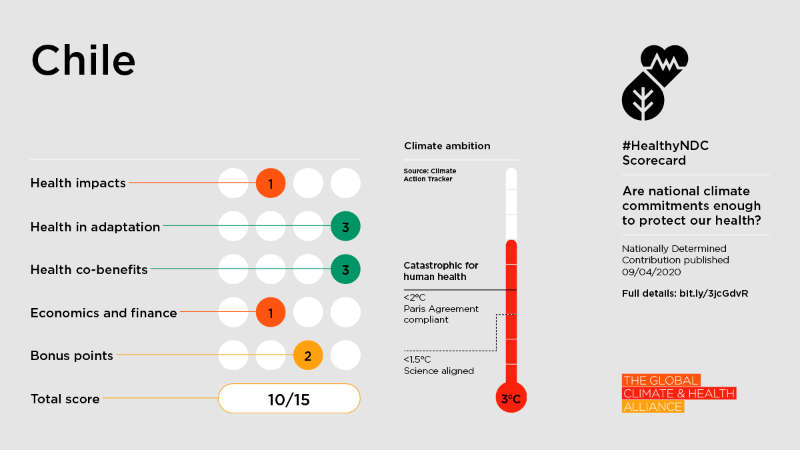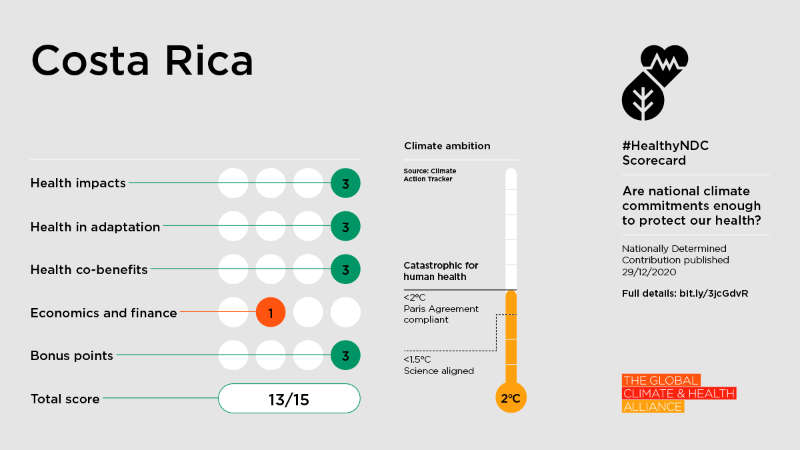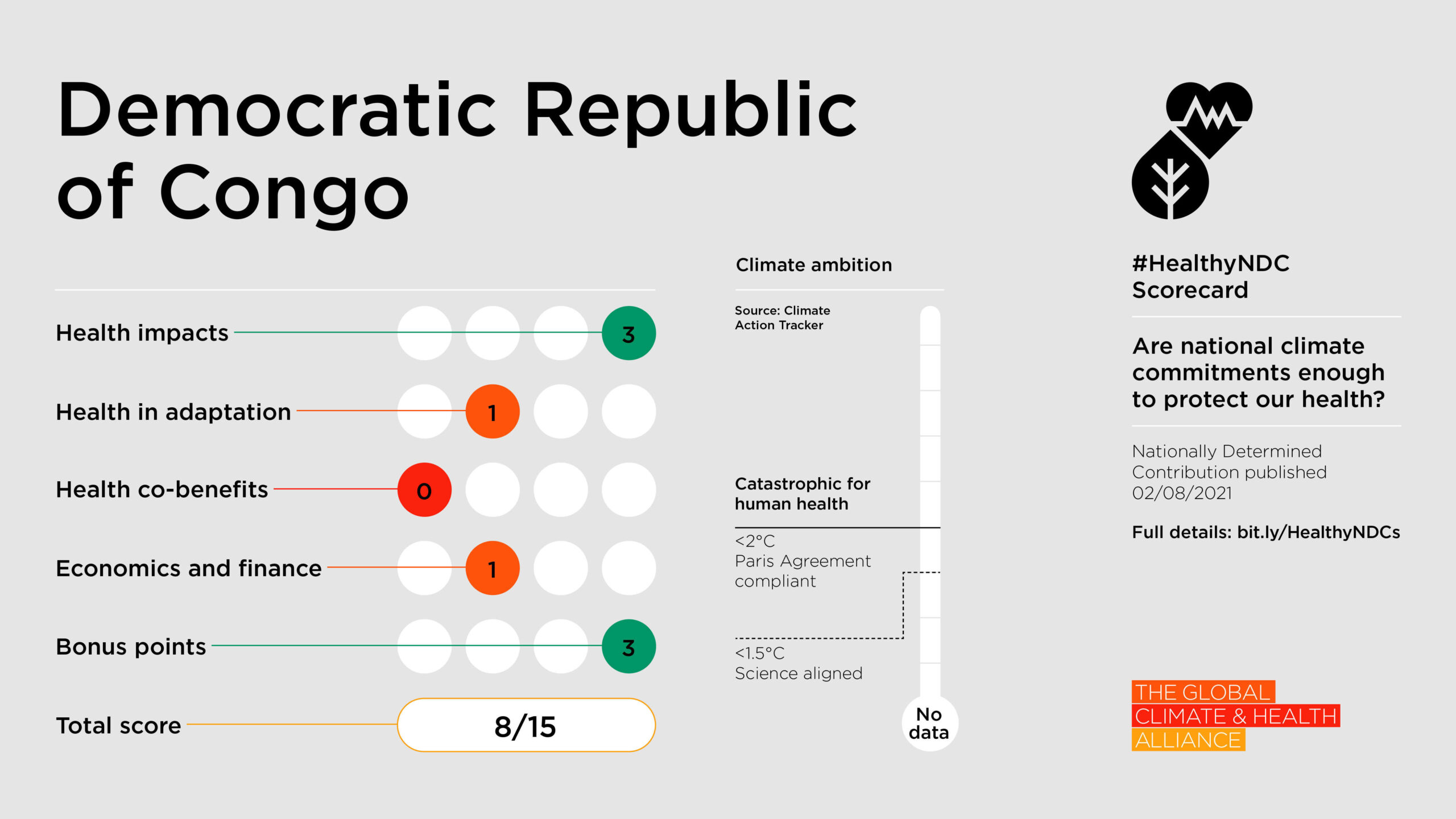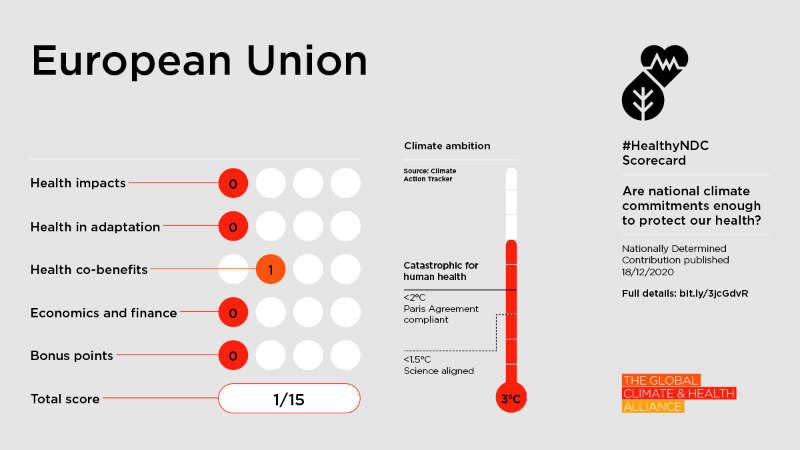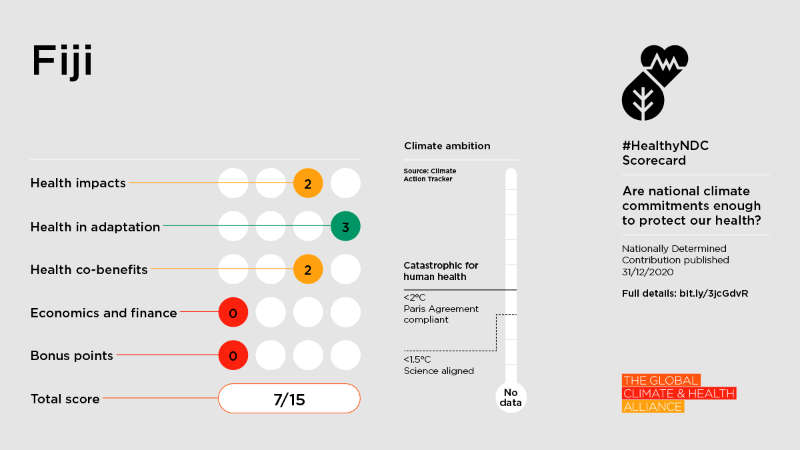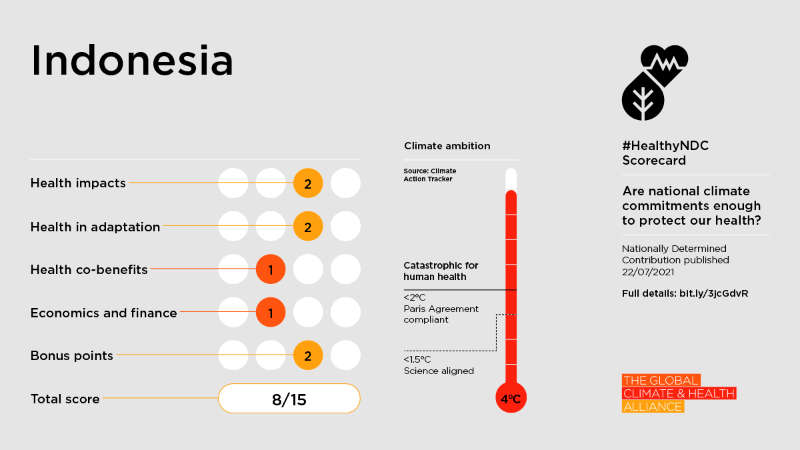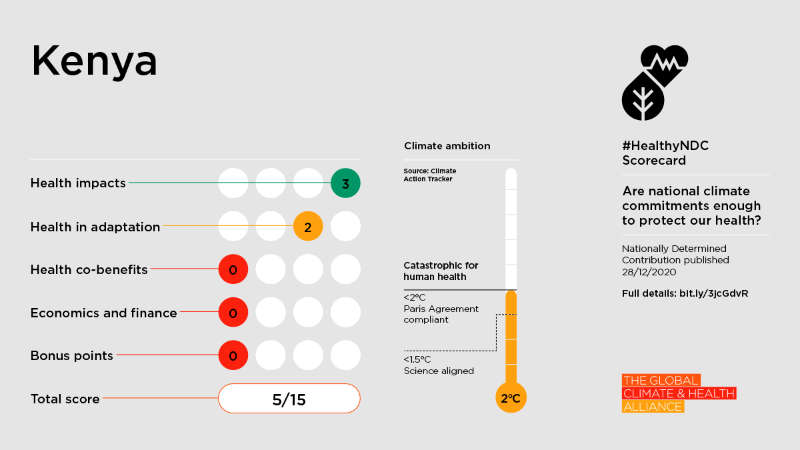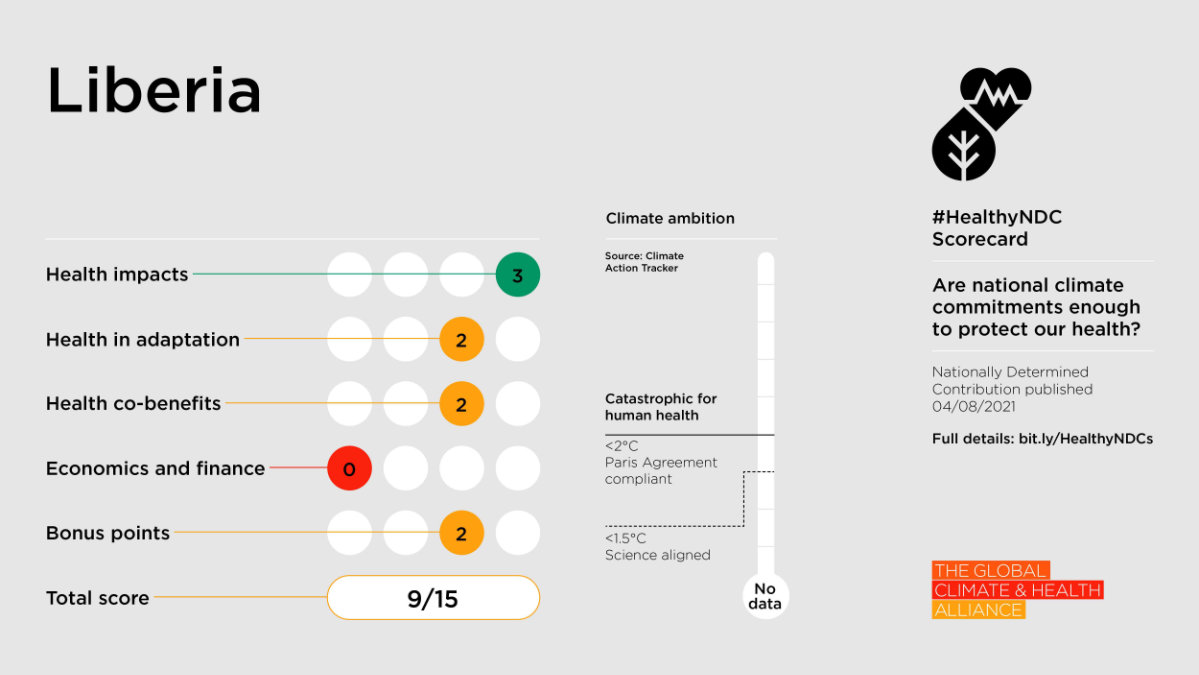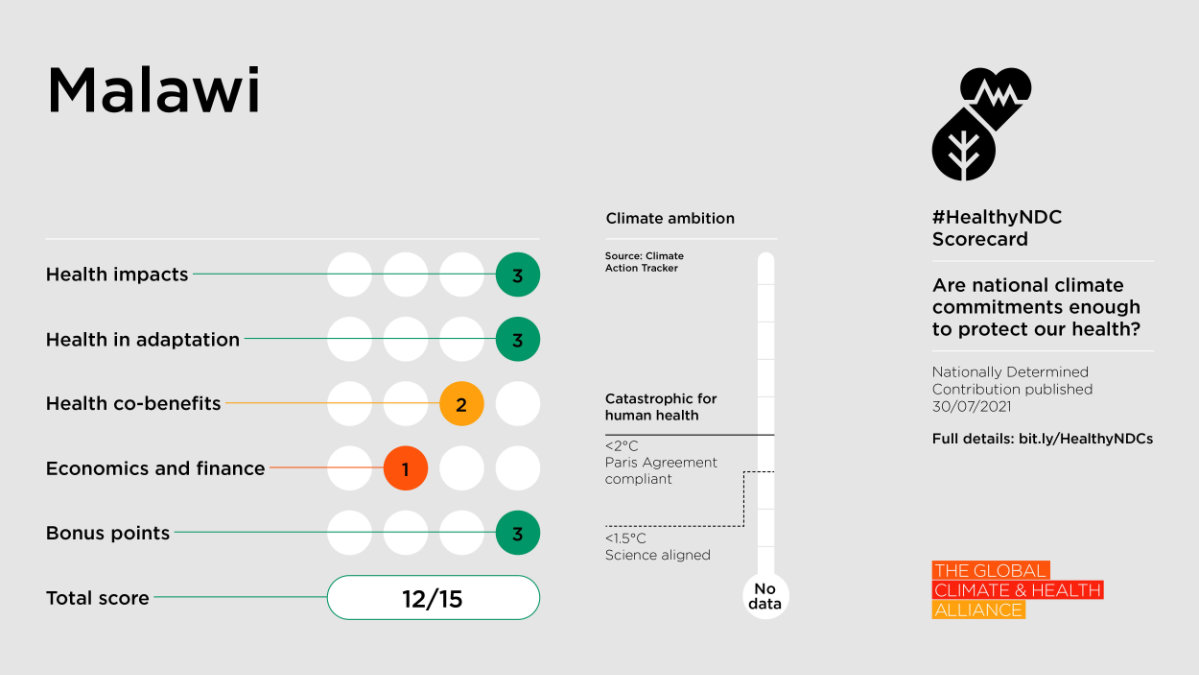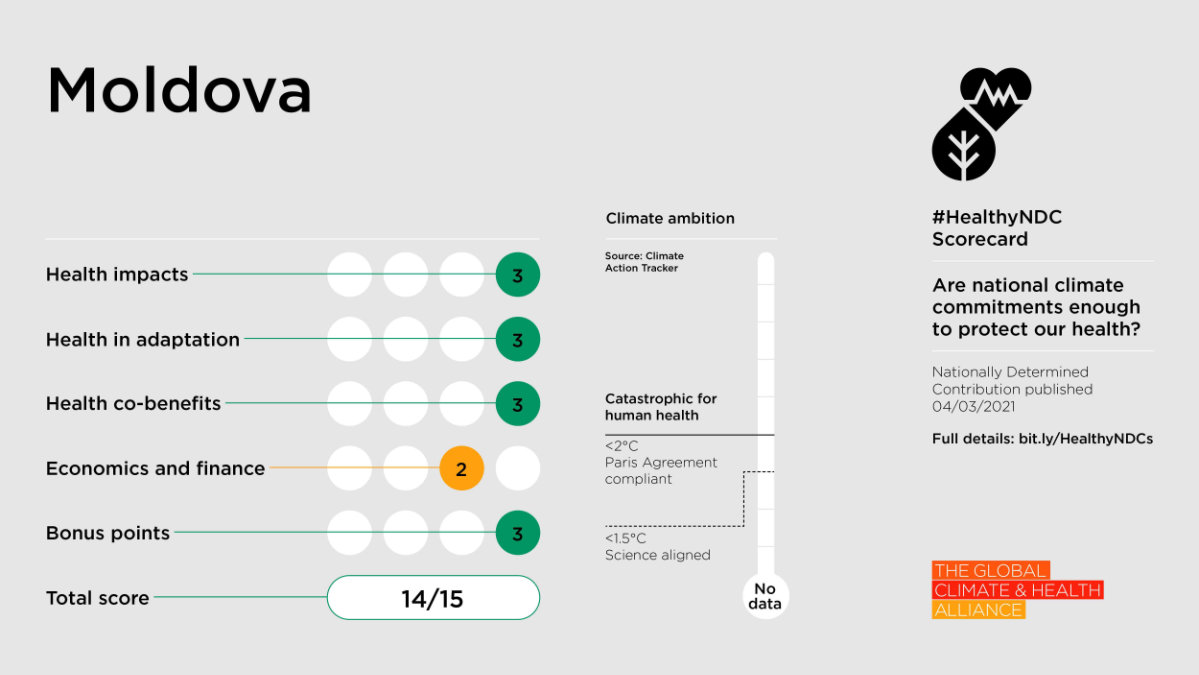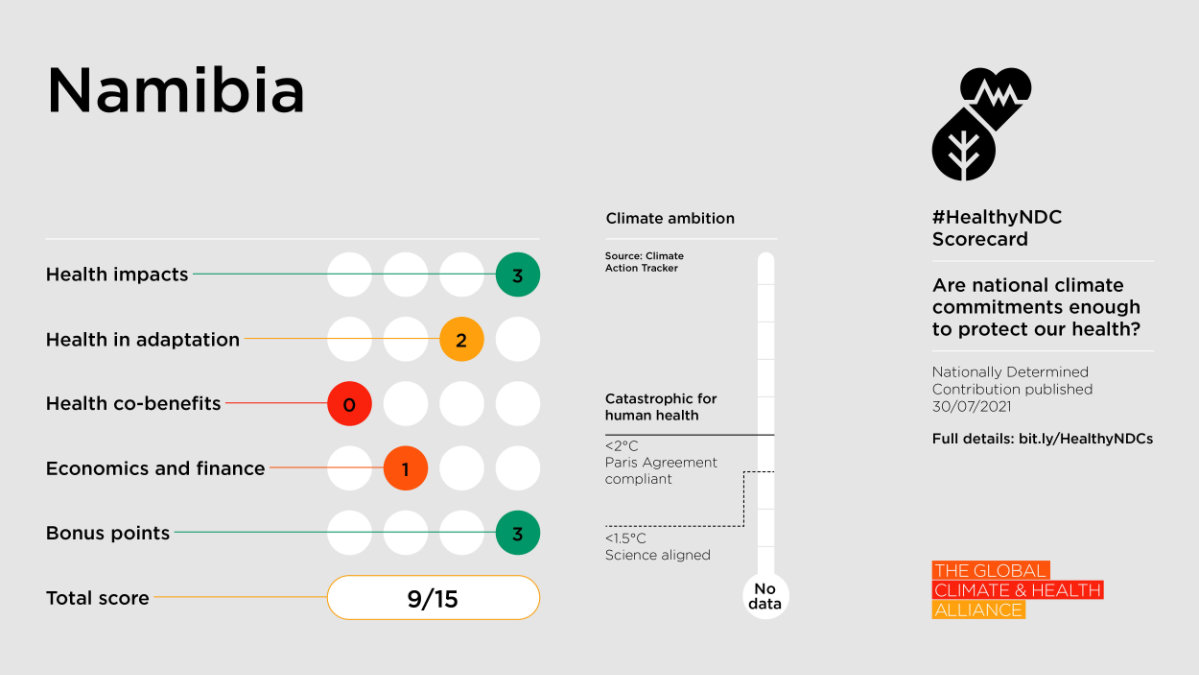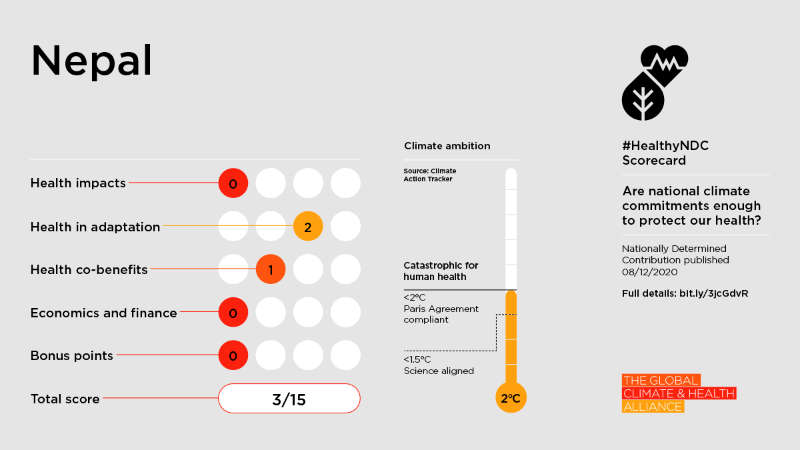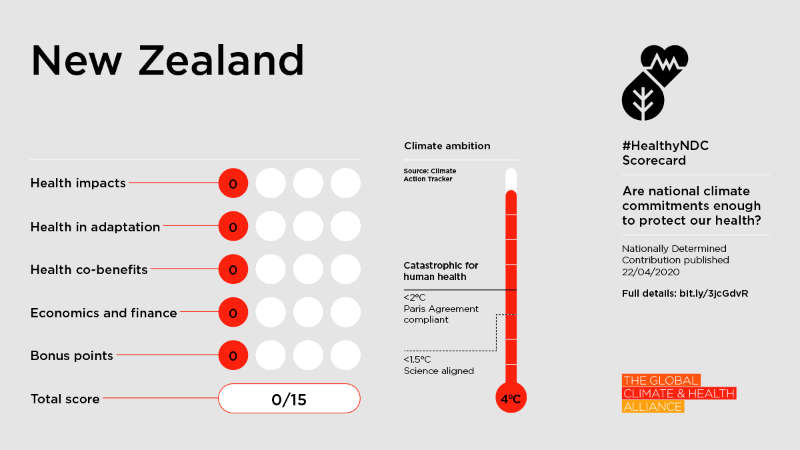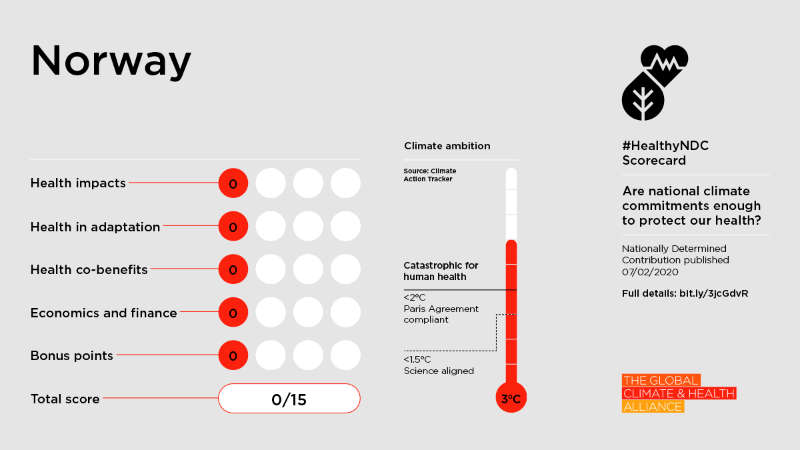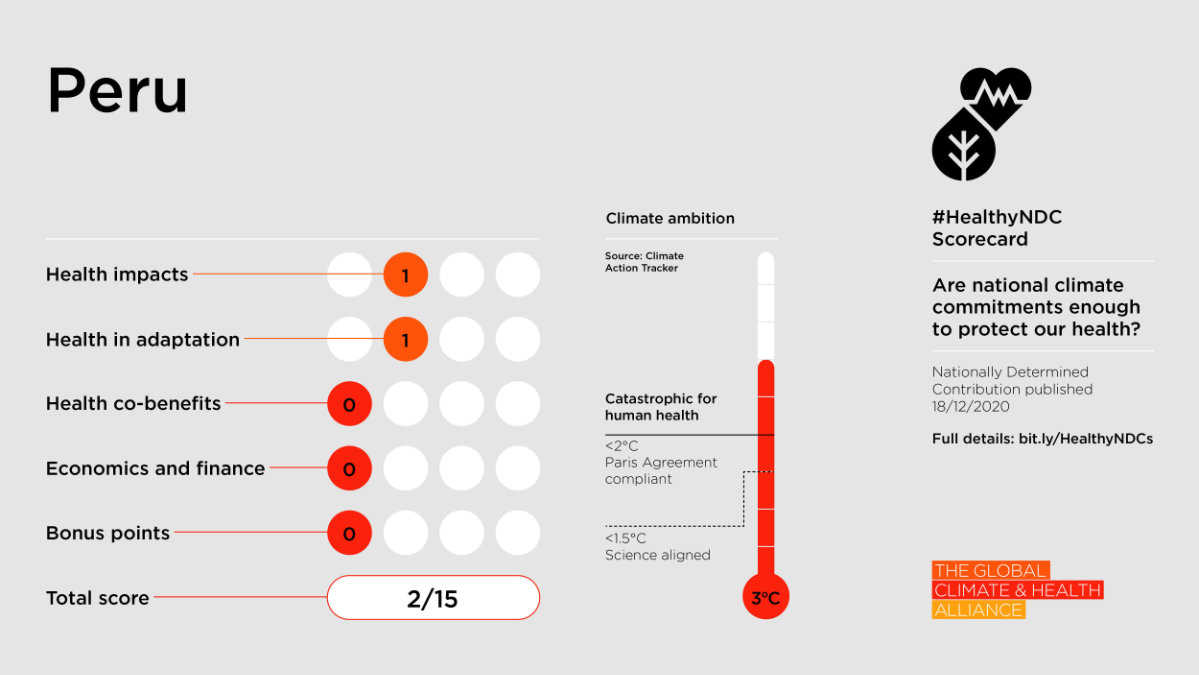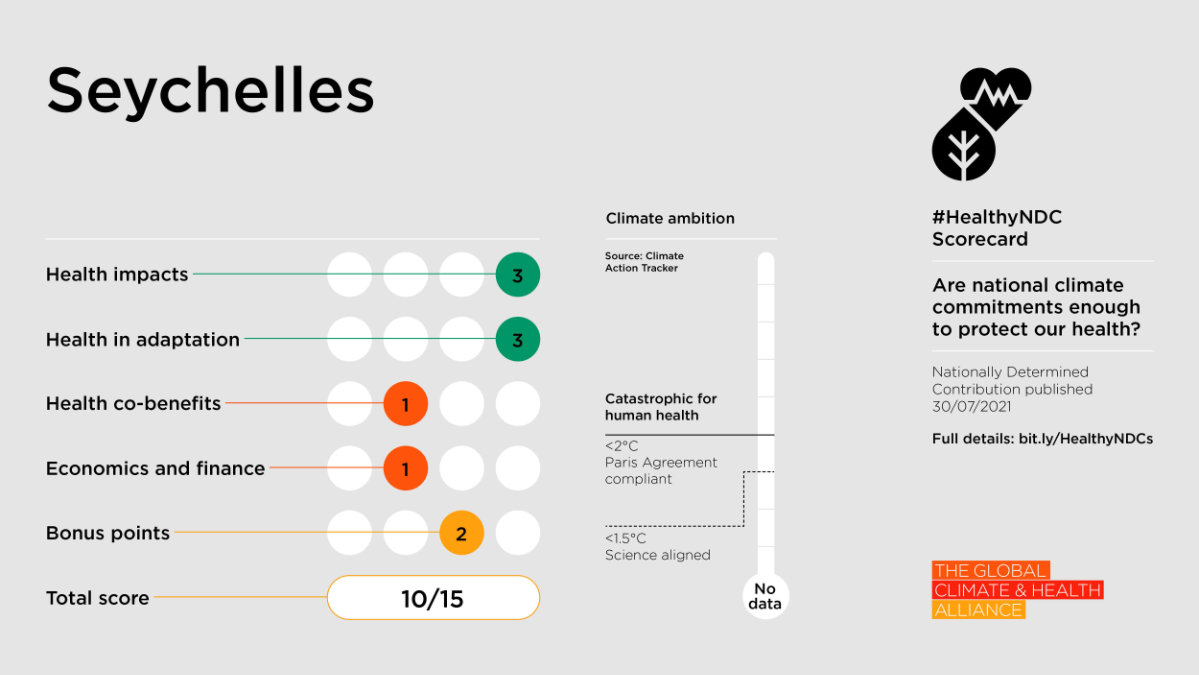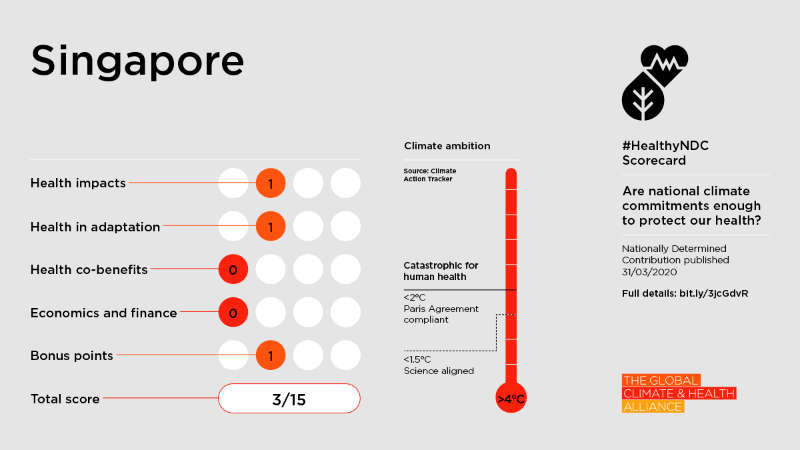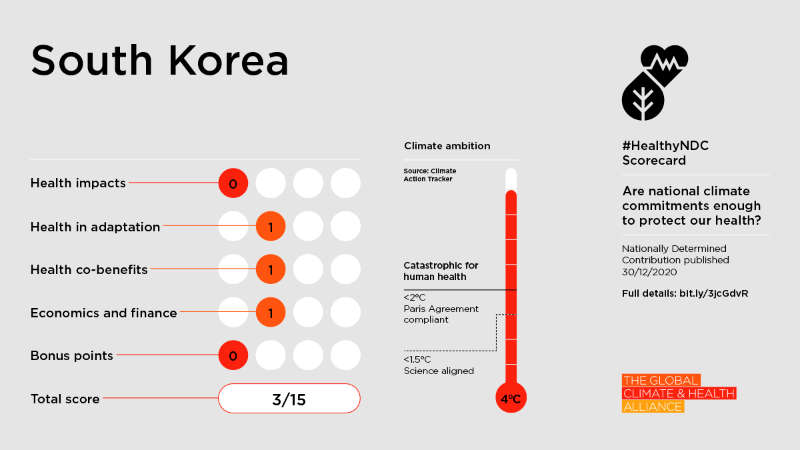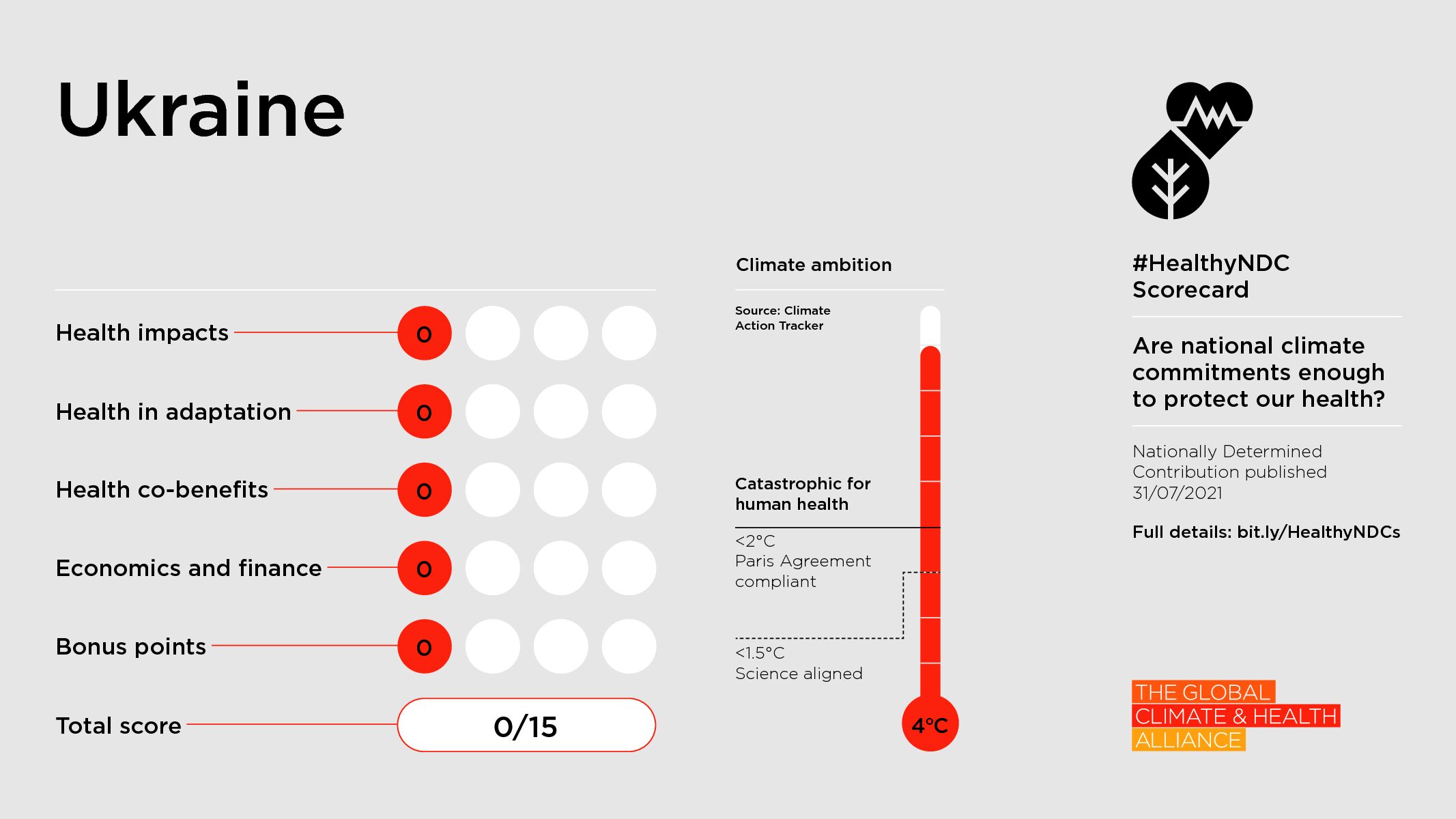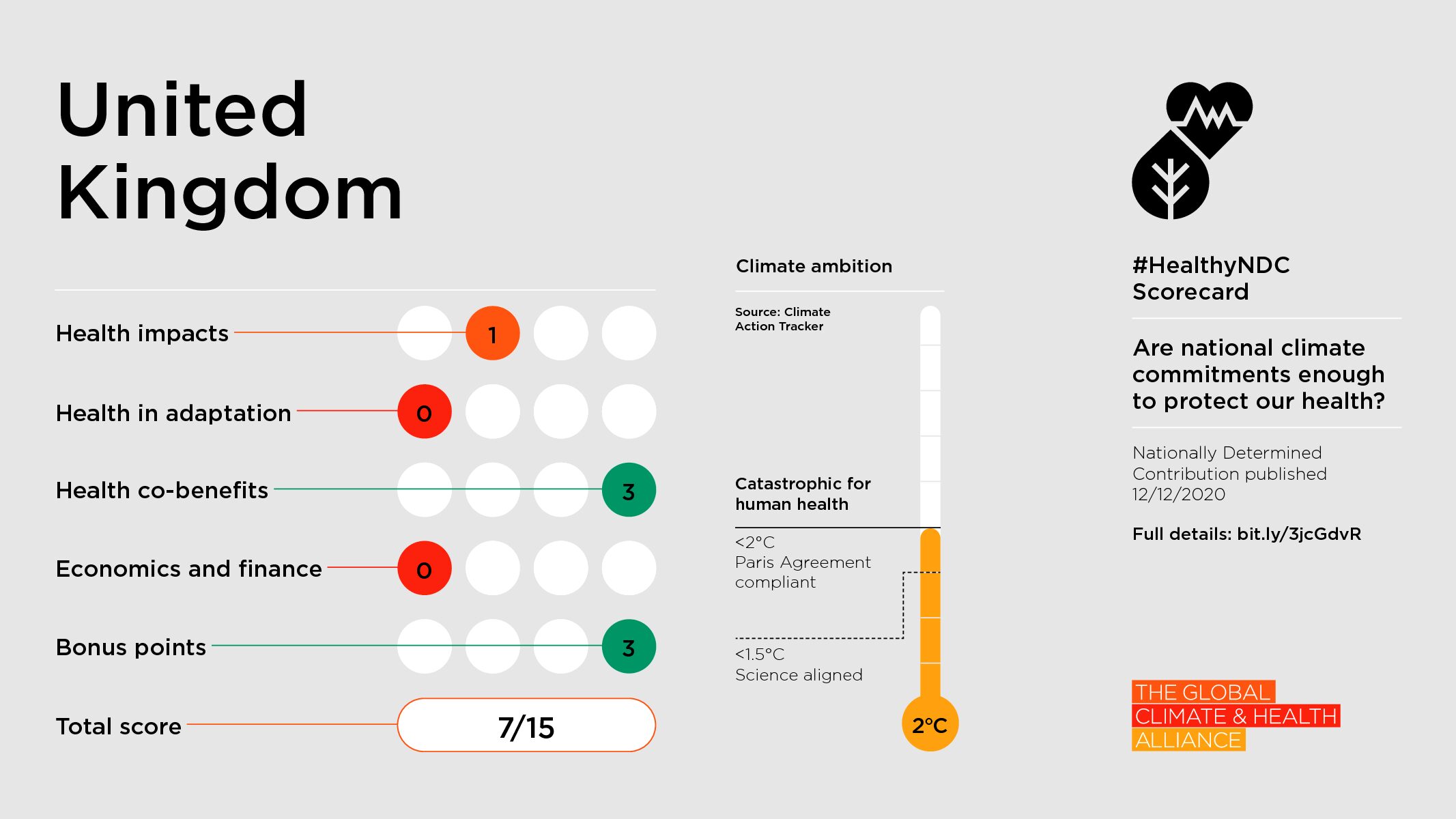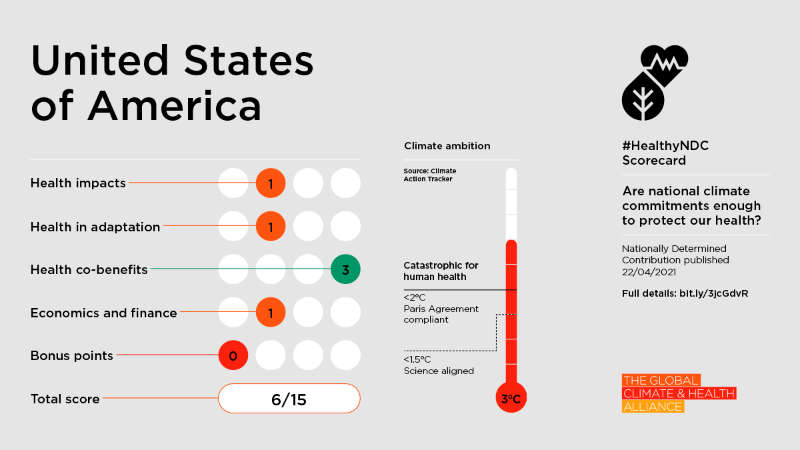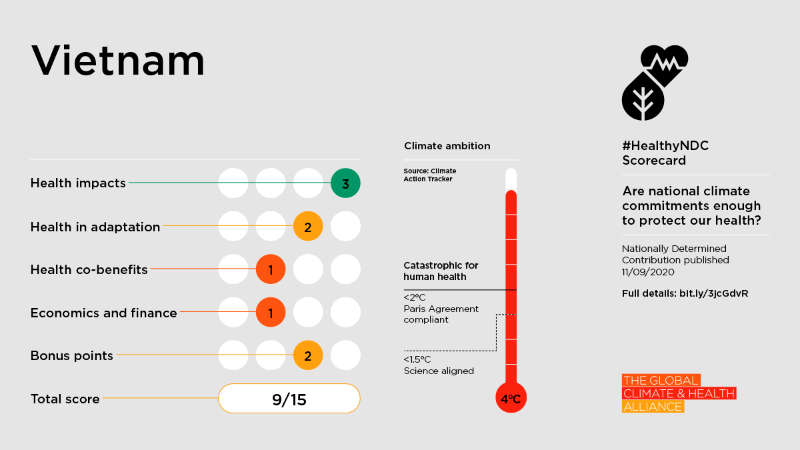Healthy NDC Scorecards 2021: Are national climate commitments enough to protect our health?
Nationally Determined Contributions (NDCs) are country commitments to deliver the goal of the Paris Agreement, limiting global temperature rise to well below 2C, and preferably to 1.5C.
The GCHA 2021 Healthy NDCs Scorecard assesses the extent to which governments’ national climate commitments recognise and respond to the abundant linkages with health. Ensuring the integration of health into climate policy protects populations, maximises economic benefits, and builds public backing for ambitious climate policies which are so urgently needed. Failure to include health in NDCs is a missed opportunity for people, the public purse, and political support.
The 2021 Healthy NDCs Scorecard ranks 94 Nationally Determined Contributions (NDCs) covering 120 countries (including the joint NDC submitted by the 27 countries of the European Union). The Scorecard covers updated and enhanced NDCs, which the UNFCCC requested to be submitted in the lead up to COP26.
NDCs were assessed based on their attention to five health categories: health impacts, health in adaptation measures, health co-benefits, economics and finance, and bonus points available for overall prominence and integration of health. Three points were available for each category, with a total possible ‘health score’ of 15.
In addition, where available, the scorecard also includes information on governments’ overall climate ambition, reflecting the most recent analysis of Climate Action Tracker. These ratings take into account domestic targets, policies and action, fair share of emissions reductions, climate mitigation finance, and land use and forestry. Overall climate ambition is the factor which will have the greatest ultimate bearing on health.
NDCs are posted on the UNFCCC website, and a full summary of the methods is available here.
The content of NDCs provides an overall snapshot of governments’ priorities relating to climate change, and this analysis serves as a barometer for the extent to which the intrinsic links between health and climate change are recognised and being addressed.
The ‘health score’ calculated by GCHA is based solely on analysis of each country’s NDC, and not other wider policies. It is important to note that rather than including adaptation measures in their NDCs, many more economically developed countries have separate adaptation strategies, and were hence awarded a lower score for adaptation than would otherwise be the case. Nevertheless, it is notable that despite the very limited resources of many nations in the Global South, low and middle income countries secured the top scores. These countries have contributed least to the emissions responsible for climate change, and are already experiencing the most severe health impacts.
By their nature, NDCs primarily refer to future plans and targets. While commitment is a prerequisite for ambitious action, health will only benefit if these commitments are delivered.
GCHA is very grateful to the following individuals for their work and guidance to make the Scorecard initiative possible: Iris Martine Blom, Omnia El Omrani, Laura Jung, Juliette Mattijsen, Blanca Paniello Castillo, Kim Robin van Daalen, and Arthur Wyns. If you have any questions about this work, please contact Jess Beagley at [email protected].
“Costa Rica recognizes that climate change will impact people’s health and that we need to take urgent action. Fortunately, we have the tools to address this issue. The investments needed to tackle climate change will improve air quality, take pressure off our healthcare systems, and improve our well-being. The recognition of Costa Rica’s climate policies in this ranking shows once again that the country is a world leader in the fight against climate change and that these actions are within reach of countries of all sizes.”
Andrea Meza, Minister of Environment and Energy for Costa Rica.
The Ranking
Cambodia, Cape Verde and Moldova received the joint highest score of all countries analysed, with 14 points out of an available 15. Costa Rica and Myanmar follow closely with a score of 13 points. All NDCs which received over 10 points were submitted by low and middle income countries, which bear the greatest burden of the health impacts of climate change. By contrast, four of the nine countries with a score of zero are high-income countries. In other cases, a mismatch between recognition of health impacts and overall ambition is notable – the level of ambition in the NDCs submitted by Colombia, Argentina, Mexico, Vietnam, and UAE does not reflect the links between health and climate change contained in their NDC. Low scores were consistently received for economics and finance, which are essential considerations if commitments are to become reality. In low and middle income countries, international financing will be crucial for delivering measures to protect health.
Countries seeking to improve their scores can look to others for example. Notably, Cambodia’s NDC includes appendices which detail financial costs and returns of mitigation and adaptation measures, with health impacts among those considered. These appendices also detail which actions can unconditionally be completed using existing national resources, and which are conditional on financing from donor countries. Cape Verde’s NDC includes health from the very outset, with a 2025 commitment to build a monitoring system for tracing climate change related risk, and to build health and integrate climate change resilience targets into the national One Health policy framework as one of its flagship contributions. Meanwhile, Moldova seeks to undertake integrated assessments of the environmental, economic and health impacts of climate change, underscoring the interdependence of these development priorities for all countries.
Aside from these countries which received the top total scores, several excelled in individual categories. Thirty-two countries scored full marks for consideration of health impacts. Both Laos and Papua New Guinea include dedicated annexed components on health in adaptation in their NDCs. Countries which were awarded the third point available in the co-benefits category included Chile and Mexico for their goals on black carbon reduction in the context of health; Costa Rica which notes Sustainable Development Goal 3 (SDG3) co-benefits for a series of timebound mitigation targets to be achieved by 2030; the UK for identifying air pollution as the leading environmental risk to health; and the USA for mention of the tens of thousands of lives which can be saved by 2030 through improved air quality. Cape Verde was the only country to score three points for economics and finance. Only eightcountries of those analysed by Climate Action Tracker were aligned with the Paris Agreement, namely Costa Rica, Ethiopia, the Gambia, Kenya, Morocco, Nepal, Nigeria and the UK, all of which aligned with the Paris Agreement of limiting warming to below 2C, although only the Gambia is aligned with the more ambitious target of 1.5C.
Country scorecards can be downloaded in multiple languages here. Please share them on social media, using the hashtag #HealthyNDCs
The only mention of health in Armenia’s NDC is a brief recognition of the need for adaptation to protect human health. Armenia’s climate ambition is not assessed by Climate Action tracker.
Belize refers to general health impacts of climate change and to vector-borne diseases such as Zika and chikungunya. While there is no standalone health adaptation plan, notable detail is included in the NDC itself. Health co-benefits of improved waste management are highlighted, and those arising from nature-based solutions are also alluded to. Budget is allocated for health adaptation interventions. A dedicated titled health section is included. Gender and vulnerability considerations fed into the NDC. Belize’s ambition is not assessed by Climate Action Tracker.
Cambodia’s NDC includes mention of a multitude of health impacts, including vector borne diseases such as malaria, water borne diseases, heat-related disease and undernutrition. The level of detail on adaptation in the health sector is exceptional, with actions set out in both the body of the NDC and an annex. Cambodia commits to air quality monitoring and to making the information easily accessible to the public, as well as recognising health benefits related to interventions in the transport and agriculture sectors. The economic impacts of reduced labour productivity due to heat stress are mentioned, along with investment in and returns on investment for adaptation interventions. In addition to multiple paragraphs which include substantial health mentions and detailed policies, health also features in the title of a subsection of the NDC. Cambodia’s NDC includes numerous mentions of gender equality. Cambodia’s level of climate ambition is not assessed by Climate Action Tracker. The Ministry of Health of Cambodia has been working together with WHO to improve the resilience of health services in the Ratanaki province, supported by funding from the GEF. Expansion of this initiative to other provinces would be extremely valuable to ensure that health services can continue to provide care for the population in this country which is currently highly vulnerable to the health impacts of climate change.
The DRC lists a wide range of health impacts in its NDC, including malaria, drought, heatwaves and malnutrition. Improved disease surveillance is also prioritised. Brief mention is made of the need for adaptation in the health sector, as well as health related sectors such as agriculture and sanitation. Budget is allocated for addressing malaria. Several mentions are made of gender equality and vulnerable groups. In addition to a titled section on health, language is also included on the right to health. DRC’s climate ambition is not assessed by Climate Action Tracker.
Georgia recognises the health impacts of extreme heat, flooding, and hurricanes and commits to study how these events impact medical delivery systems and healthcare in the country. It also intends to assess the effects of climate change on human health through the interdisciplinary study of the relationships between social, economic, biological, ecological and physical systems. Georgia’s climate ambition is not assessed by Climate Action tracker.
In its NDC, Liberia includes reference to health impacts such as infectious disease, malnutrition, mental health, and chronic diseases, and also plans to improve disease surveillance systems. While no mention is made of a dedicated health adaptation plan, interventions are listed in considerable detail. Liberia links mitigation interventions across multiple sectors to health, and also refers to mitigation in the health sector. The NDC briefly mentions gender equality and social inclusion. A titled health section is included. Liberia’s climate ambition is not evaluated by Climate Action Tracker.
Malawi’s NDC refers to health impacts including vector-borne diseases, malnutrition, and exposure to extreme weather events. It also notes that the 2015 floods took the lives of over 100 people. Malawi plans to develop a National Adaptation Plan for health. Health co-benefits are identified from mitigation interventions in the transport sector and from clean cooking. Anticipated costs for interventions yielding health co-benefits are specified. In addition to including a titled health paragraph, Malawi integrates health throughout its NDC, including several mentions of health equity. The climate ambition of Malawi is not assessed by Climate Action Tracker.
Health impacts of climate change including those relating to noncommunicable diseases, hyperthermia, sunstroke, allergies, cholera, and diarrhoea are referred to in Moldova’s NDC, together with a commitment to improve integration of climate change into disease monitoring systems. The climate ambition of Moldova is not assessed by Climate Action tracker. In addition to outlining multiple adaptation interventions for health in its NDC, Moldova also mentions its dedicated health Sectorial Adaptation Plan (SAP). The NDC also includes reference to green hospitals, and to air quality monitoring stations specifically in relation to health. Moldova’s NDC includes budgetary allocations for health adaptation actions, and for modifying hospital infrastructure to meet green standards. Bonus points were allocated on account of the inclusion of a dedicated health paragraph, and the level of detail provided for health related policies.
Myanmar refers to both general and specific health impacts in its NDC, including those related to heat, floods, and other hazards, and mentions both the 138,000 people were killed by Cyclone Nargis and the 132 deaths in the wake of Cyclone Komen. Myanmar will develop a National Adaptation Plan for the health sector. Health co-benefits of clean cooking (specifically reduced respiratory and eye diseases) are mentioned, alongside those arising from access to green space and more improved air quality from more sustainable transport systems. A specific budget of USD 0.98million from the Global Environment Facility is included for healthcare adaptation and monitoring actions, as well as the need to establish a multistakeholder coordination framework that supports access to finance for health and other priorities. Myanmar includes a dedicated titled health section in its NDC as well as integrating health throughout the document. Climate justice and equity are pillars of the Myanmar Climate Change Master Plan. Justice and equity are however severely jeopardised by the ongoing national political crisis, which will hinder the realisation of many health aspirations described in the NDC. The country’s climate ambition is not assessed by Climate Action Tracker.
Namibia describes how climate change is already exacerbating infant and adult mortality, including due to diarrhoea, undernutrition, and malaria. The current burden of these diseases in children is quantified. The main causes of adult mortality are AIDS, tuberculosis, and malaria. Since these diseases often co-occur, it is difficult to establish the exact cause of death. While Nambia does not refer to a standalone health adaptation plan, it does include substantial detail on health adaptation measures. Detailed budgetary allocations are included for health adaptation measures. In addition to a titled section on health, Namibia includes notable depth on health relevant policies throughout its NDC. Gender equity is mentioned several times in the NDC. Namibia’s ambition is not evaluated by Climate Action Tracker.
The NDC of Nigeria mentions health impacts including general climate related disease and deaths due to flooding. A brief reference is made of the need for adaptation in the health sector. Nigeria refers to multiple co-benefits, including those relating to air quality (with associated projections), and nutrition co-benefits arising from nature based solutions. The costs of childhood malnutrition are estimated at 11% of GDP. Nigeria’s climate ambition is assessed as being in line with 2C. With regard to equity, Nigeria’s NDC specifically seeks to mainstream gender across all sectors.
Peru’s NDC received only two points: one for recognising the impact of climate change on wellbeing, and one for identifying health as a priority sector in adaptation. Its NDC does not comply with the Paris Agreement, and is instead aligned with a 3C temperature rise.
Qatar’s NDC briefly refers to heat exhaustion but makes no reference to adaptation measures to protect health. Qatar monitors air quality via its Air Quality Index and Inhalable Particulates Index. The country’s climate ambition is not assessed by Climate Action Tracker.
The Seychelles mentions health impacts including relating to heat, nutrition and flooding (including electric shocks), and plans to improve health surveillance. The Seychelles Climate Change and Health Adaptation Plan (SCCHAP) was developed in 2013. The NDC mentions health co-benefits of interventions in the transport sector. The importance of financing to address maternal and child health is noted. A titled health section is included in the NDC. The climate ambition of the Seychelles is not assessed by Climate Action Tracker.
Following consultation on its draft NDC earlier this year, South Africa published a substantially improved final version in September. While the climate ambition of South Africa has not been re-assessed by Climate Action Tracker since the submission of the updated NDC, adherence to the lower end of the target emissions range set out in the NDC would be aligned with the Paris Agreement. In its NDC, South Africa recognises the impact of climate change for a changing disease burden and in terms of heat waves, as well as recognising the vulnerability of particular groups. The country plans to strengthen climate-sensitive disease surveillance, and to develop a dedicated health adaptation plan. In addition to recognising the health co-benefits of improved air quality, South Africa refers to the need to monitor air pollution. A budget is mentioned for adaptation planning in general, but could be made more specific to health. The NDC includes a section with a strong focus on health, and also refers to the right to a healthy environment. Equity is integrated throughout the entire NDC.
Ukraine’s NDC makes no mention of health-related considerations. Furthermore, the country’s climate ambition falls far short of the commitment needed to align with the Paris Agreement, instead being aligned with 4C of warming. This represents a severe missed opportunity to protect the health of people in Ukraine and globally.
View the Press Release
Press enquiries to Dave Walsh: [email protected]
